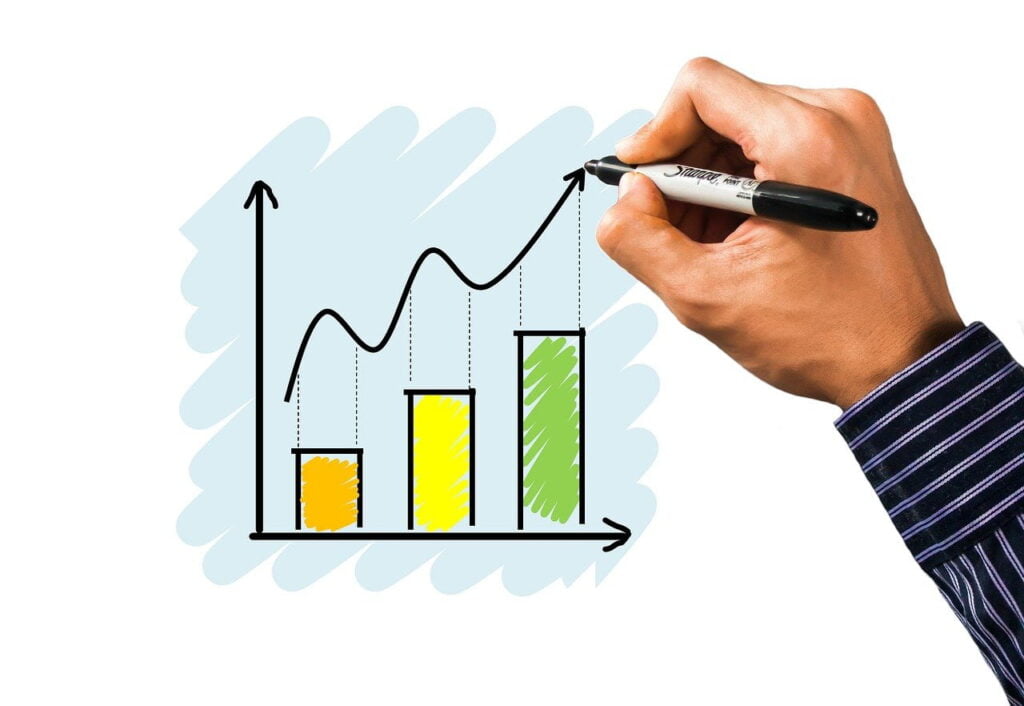If you’re new to content marketing, hearing the term “content analytics” could be enough to send you running for the hills.
After all, it sounds intimidating to someone unfamiliar with operating online. Right?
Nope!
In fact, understanding how to interpret your content marketing analytics is the exact tool you need to know where to focus your efforts.
Why would you keep marketing a specific aspect of your business when your audience wants something else?
It’s simple; you wouldn’t! And you absolutely shouldn’t!
Join us as we examine what content marketing analytics are, which metrics to track, and how to interpret them and improve performance. Watch your return on investment grow as you start directing your efforts in the right areas.
Let’s go!
Key Takeaways
- Content analytics involves collecting data to understand visitor behaviors and interactions with published content.
- It allows marketers to adjust their content marketing strategy to better impact their target audience.
- Important metrics to track in content marketing analytics include unique visitors, share rate, page views, time on page, scroll depth, and click-through rate.
- Data collected from content analytics can be used to improve the customer journey, increase conversion rates, and optimize content for search engines.
- Some tips for using content analytics effectively include setting clear goals, regularly analyzing data, and using multiple analytics tools for a more comprehensive understanding.
What is content analytics?
Before we get into which metrics to focus on, let’s develop an understanding of what content analytics means.

Essentially, it refers to a collection of data that provides actionable insights gathered to understand visitor behaviors and interactions with your published content.
The data collected by content analytics tools reveal which devices visitors use to view your site. This content management software also reveals which links they follow, and so much more. The information gathered allows you to determine content effectiveness and adjust your strategy for greater impact.
Publishing outstanding content on your website is a wasted effort if it isn’t relevant to your audience. Each piece should play a role in your sales funnel.
Of course, this doesn’t mean that we all have to be statisticians to understand the information we receive. But did you know that few marketers effectively track the metrics that matter?
Right, that statement probably leaves you asking, “Which metrics areas should I track”?
Don’t worry; we have you covered there too! Just keep reading.
Which content marketing analytics matter?
Above all, you should remember that the goal of content analytics is to gain new insights with the intention of improving continuously. Ignoring content creation stats is about as useful as shooting at a target that you can’t see.
Just don’t!
Here are the main aspects you should be looking at in your content marketing analytics:
- Unique visitors: Website growth is all about exposure. New visitors play a significant role in this. By monitoring these consumption metrics, you can determine if you’re reaching the right people or need to adjust your content to appeal to them.
- Share rate: As mentioned, exposure is your best friend online. If your audience enjoys the content published, they’re more likely to share it with their friends. This information tells you how often the content has been shared on various social media platforms.
- Page views: This counts more toward the website than content analytics, but it’s still relevant. By monitoring page views, you can see which pages draw the most attention and which don’t. Those are the ones you should pay attention to and tweak accordingly.
- Time on page: Another aspect to monitor with content analytics tools is how much time visitors spend on a page (also referred to as Attention Time). Ideally, you want to keep visitors interested in the content you’re sharing and the services or products you’re offering.
- Scroll depth: How far a visitor scrolls on your page is a significant factor for Google analytics for content marketing. If your visitors leave the page early or don’t scroll very far, this tells Google that they were bored, negatively impacting your ranking. Your site should not only meet the SEO requirements but also keep readers interested.
- Click through rate: So you’ve managed to keep your visitors reading an entire article, what happens when they’re done? Does your call-to-action (CTA) compel them to take the next step in the customer journey? This is what the CTR metrics tell you…how many people clicked on your CTA.
Of course, the analytics tool you use might track more key metrics. But these are the main ones to look out for.

How to use content analytics in your marketing strategy
As we’ve seen, content analytics play an essential role in creating a clear plan for your website and content performance. But how do these metrics help you make better decisions for your online business?
Here are the three main ways that content marketing analytics data can help you determine which changes to make.
Personalization
When creating your content plan, you should have a buyer persona (or a few) on hand. These help you understand user behavior and tailor your content to your target market.
Marketing analytics trends and other metrics can help you determine if you’re reaching your target audience. From there, you’ll know how to personalize your content accordingly.
Optimization
Performance metrics help you determine which areas need optimization for the best results. For example, metrics obtained by Google Analytics for content marketing reveal how well your pages are performing.
Experiment with the various SEO aspects (headers, layout, and format) to determine which works best for your site.
Strategy
Before you launch your website, you should have a content marketing strategy in place. Without it, you may as well throw paint at a blank canvas while blindfolded and expect a masterpiece.
The information obtained through your content analytics reveals how each piece of content is performing. All that’s left is to decide if you should keep, remove, or amend your content.
With a clear understanding of the data obtained through business analytics, you’ll have a better understanding of what your clients want. This information also helps when making more significant business decisions like
- Marketing strategies
- Prioritizing products and features
- Customer service improvements

Content analytics FAQs
While you don’t need a degree in statistics to understand content analytics, all the information can be daunting to understand at first.
We’ve compiled a few of our most common questions to clear up confusion.
Is there a difference between website and content analytics?
Yes, there is. Website analytics track a portion of the content experience, namely the site performance part. Content analytics, on the other hand, looks at the full experience. It analyzes how the various forms of content and the website as a whole performs.
Can content analytics determine success?
Absolutely! Without detailed content marketing analytics data, you won’t know if there are pieces of content that need attention. You cannot fix what you don’t know is broken. Nor can you improve it.
You can’t run a race if you don’t know where the finish line is. Why would you try to run your business without measuring your progress toward your goal?
Conclusion
Utilizing your content analytics data is an essential part of creating and optimizing a strategy that works. Ultimately, sufficient data provides a clear understanding of the value your digital content provides.
As a business owner or decision-maker, you should be playing on your own strengths and focussing on the big picture. The task of running content analytics that’ll produce tangible results may be something that you’d prefer to delegate.
That’s where we come in! At Grassroots Content, our scope goes beyond just writing content. We provide a full content analysis and track performance on your website.
Reach out to us to discuss the various packages available.

